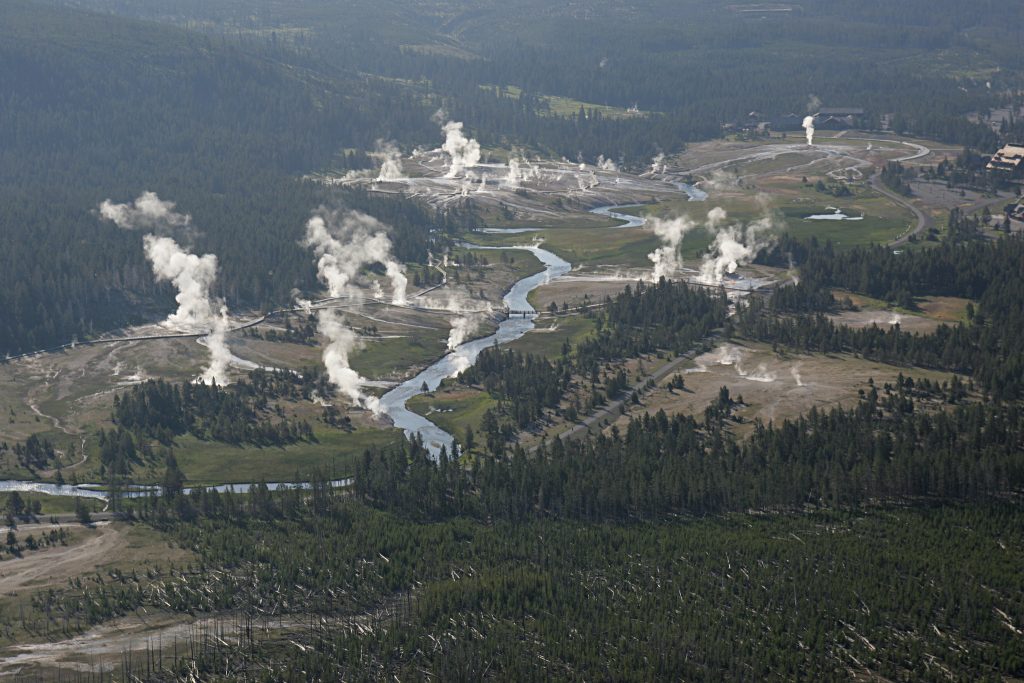Welcome to Facts Vibes! Today, we’re delving into the fascinating world of Yellowstone Volcano. Get ready to uncover 10 mind-blowing facts about this powerful natural wonder. From its explosive history to the remarkable geothermal features, this article will take you on an intriguing journey through the heart of Yellowstone’s volcanic marvels.
Discovering the Enigmatic Yellowstone Volcano: 10 Intriguing Facts
Discovering the Enigmatic Yellowstone Volcano: 10 Intriguing Facts
1. Supervolcano Status: Yellowstone is home to a supervolcano, which has the potential to erupt with a force thousands of times greater than a typical volcano.
2. Massive Caldera: The Yellowstone supervolcano sits within a massive caldera, a cauldron-like depression formed by the collapse of a volcano after an eruption.
3. Hotspot Activity: The volcano is fueled by a hotspot beneath the Earth’s crust, leading to continuous geothermal activity in the region.
4. Iconic Geysers: Yellowstone National Park is famous for its geysers, including the renowned Old Faithful, which shoots water into the air at regular intervals.
5. Magma Chamber: Beneath Yellowstone lies a huge reservoir of molten rock, known as a magma chamber, which sustains the volcanic activity in the area.
6. Geological Hotspot: The park is a hotspot for geological research, providing valuable insights into volcanic processes and geothermal energy.
7. Historic Eruptions: Yellowstone has experienced three supereruptions in the past 2.1 million years, with the most recent occurring approximately 640,000 years ago.
8. Impact Scenarios: Scientists study the potential impacts of a future Yellowstone eruption, considering the devastating effects it could have on the surrounding areas.
9. Biodiversity: Despite the volcanic activity, Yellowstone boasts a diverse ecosystem, supporting a wide range of wildlife and unique geothermal features.
10. Visitor Attractions: The stunning landscapes and natural wonders of Yellowstone continue to attract millions of visitors each year, offering a fascinating glimpse into the power and beauty of volcanic forces.
Discovering the Enigmatic Yellowstone Volcano reveals an incredible blend of geological wonders, environmental significance, and potential hazards that continue to captivate scientists and visitors alike.
Most popular facts
Yellowstone volcano is located in Yellowstone National Park in the United States.
The Yellowstone volcano is located in Yellowstone National Park in the United States.
It is one of the largest active volcanic systems in the world.
Sure, the answer to your question is: It is one of the largest active volcanic systems in the world.
The last major eruption occurred approximately 640,000 years ago.
The last major eruption occurred approximately 640,000 years ago.
Yellowstone’s volcanic activity is monitored by the United States Geological Survey (USGS).
The United States Geological Survey (USGS) monitors Yellowstone’s volcanic activity.
The caldera is 30 miles wide and 45 miles long.
The caldera is 30 miles wide and 45 miles long.
There are over 10,000 hydrothermal features in Yellowstone, including geysers and hot springs.
Yellowstone has over 10,000 hydrothermal features, including geysers and hot springs.
The supervolcano has experienced three major eruptions in the past
The supervolcano has experienced three major eruptions in the past.
1 million years.
Sure, 1 million years is a significant unit of time in the context of Information and facts.
Scientists consider Yellowstone to be a “high-threat” volcano due to its potential for large, destructive eruptions.
Yellowstone is considered a “high-threat” volcano due to its potential for large, destructive eruptions.
The park’s geothermal features are a result of the underlying magma chamber.
The park’s geothermal features are a result of the underlying magma chamber.
Yellowstone experiences thousands of small earthquakes each year, indicating ongoing volcanic activity.
Yes, Yellowstone experiences thousands of small earthquakes each year, indicating ongoing volcanic activity.
The volcanic system spans parts of Wyoming, Montana, and Idaho.
The volcanic system spans parts of Wyoming, Montana, and Idaho.
Visitors to the park can observe geothermal activity at popular sites like Old Faithful.
Visitors can observe geothermal activity at popular sites like Old Faithful in the park.
The Yellowstone caldera is considered an active volcano, but there are no signs of imminent eruption.
The Yellowstone caldera is an active volcano, but there are no signs of imminent eruption.
Volcanic gases, such as carbon dioxide and helium, seep through the ground in the park.
Volcanic gases, such as carbon dioxide and helium, seep through the ground in the park.
The volcano’s last known lava flow occurred approximately 70,000 years ago.
The volcano’s last known lava flow occurred approximately 70,000 years ago.
In conclusion, the Yellowstone volcano is a fascinating geological feature that continues to intrigue scientists and researchers. Its unique characteristics and potential impact on the environment make it an important area of study. By understanding the facts about Yellowstone volcano, we can better appreciate the complex forces at work in our planet’s geology and how they can shape our world in the future.
